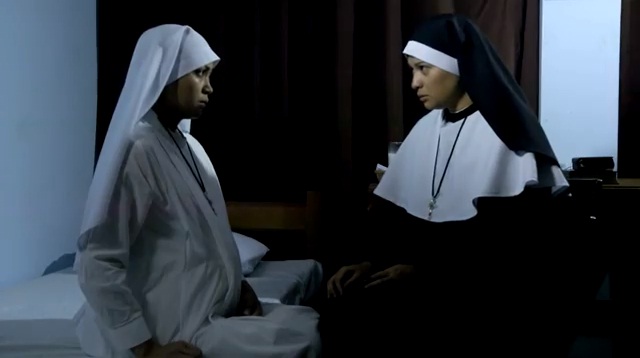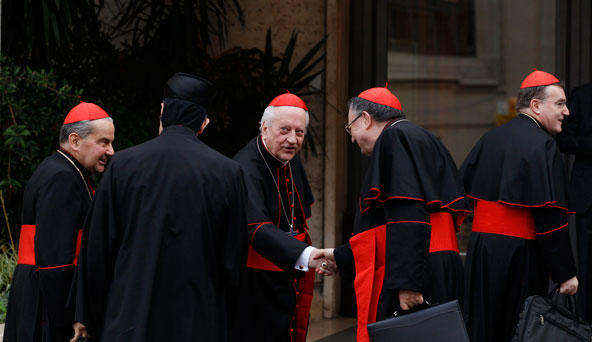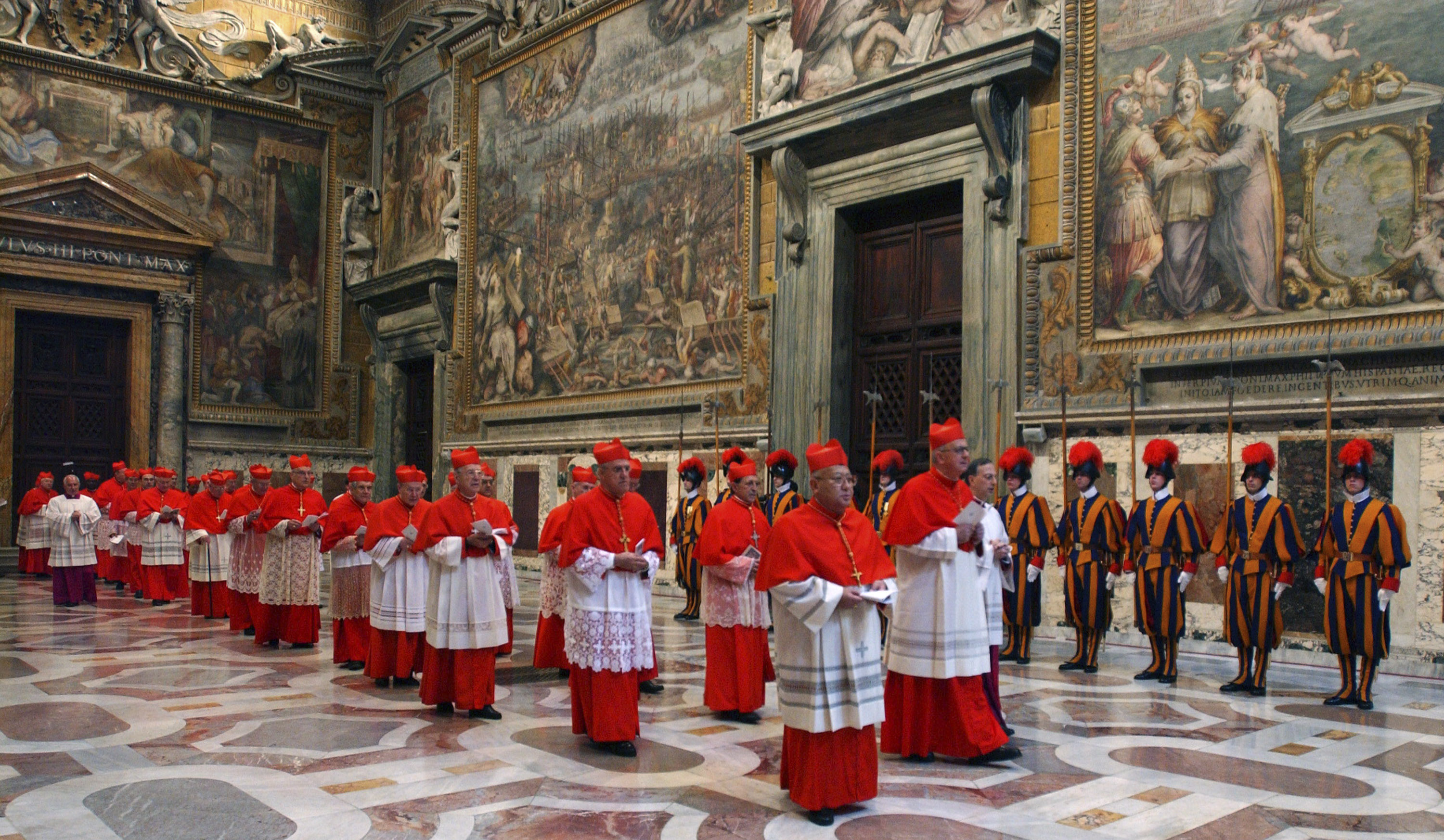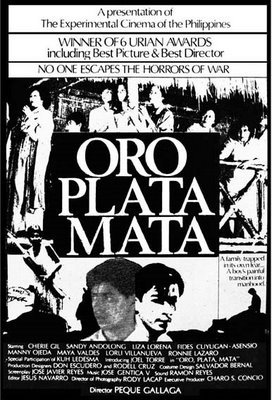Serenity and Sin: Vincent Sandoval’s Aparisyon
My friends and I were about to back
out from watching the film mainly because it will consume a great portion of
our time and considering that its Finals-Hell week. But our indignation to our
past plans reaffirmed our willingness. I am not accustomed to telling the whole
movie with its whole crap and goodies so please bear with my seemingly crazy
thoughts.
A
nunnery would be a concrete image of prim and proper, serene faith, stable
conscience. The initial story gave us a peek on a secretive monastic life
confined in the silent walls of the convent. It house women who devote
themselves to complete and ultimate seclusion from the outside world which
embodies all the chaos that the world possesses. Sandoval’s Aparisyon broke the
both the stereotype and the archetype. The nunnery then becomes unstable,
chaotic and somehow unfaithful. The story would bring an audience to a new
paradigm of a cloistered life. Would the story deify nuns? It’s up to you, so
watch the film (if you never had the chance).
In
a mythology class, especially to those who are taking Literature, the concept
of a mythological center is thoroughly discussed to have a better lens on
reading a text. This center is always applicable to every story from Greek
dramas to Chick flick films. The center is a place of serene and psychical
balance, perfection and Gods reveal themselves in this place. A better image
would be the Garden of Eden for the Book of Genesis or Olympus for Greek
Mythology. Having this in mind, we also have a concept of the center’s reversibility.
The balance and perfection is altered in a more unwanted appearance. For the
Garden of Eden, this would be Adam and Eve’s betrayal of God’s trust. While for
Greek mythology, this could be the Gods’ invasion of the human realm to solicit
aesthetic satisfaction. Aparisyon takes the convent as a center and therefore
presenting its reversibility to a more enhanced plot. The convent like the
Garden of Eden and Olympus is twisted to an unexpected angle.
Nuns
despite their unshackled faith became uncertainty as to which they should act
according to a sound and heavenly judgment. Their serenity was dismantled from
their psyche causing them to be like any other person, circumscribe in a
society. They were life any other desaparacidos,
by their loss is aligned to a loss of faith, reason and wisdom.
Aparisyon
takes very whetting style of foreshadowing. Mylene Dizon’s opened radio speak
about a clearer context from the story will revolve. Jodi Sta. Maria’s detection
of animals who were actually rapists behaving as nonetheless an animal. The old
nun’s changing distinction of the Mother superior paints the difference of our
schema towards the mentioned character.
The
film was set in the pre Martial law period where a chaotic Philippines was
presented in forms of Radio and newspaper therefore solidifying the fact that
nuns indeed cloistered from the outer world sounding like hermitically sealed
for purity in God’s name. This period serves as stimuli for reversibility of
the notions of the convent. Man’s politics’ therefore has direct effects to a
person as whole. It disestablishes even spiritual balance that completes a nun’s
vocation. They deviate from the standards that ecclesiastical thumbs ratify. If
nuns are susceptible to a diminished faith, how much more are we?
There
are two fundamental types of sin – omission and commission. Sin of omission is incurred
when one doesn’t do what he must do. While sin of commission happens when one
does what he must not do. The prevalent infraction in the film was omission.
The Mother superior Ruth with her companion failed to protect the raped
novitiate. While Sister Remy (Mylene Dizon), left Sister Lourdes (Jodi Sta.
Maria) to escape from the troubles of being a second rape victim. Ironically,
it was Sister Remy who caused Sister Lourdes to return late night and suffer
such consequence.
Mother
Ruth’s washing of her blood stained hands signifies her open repentance over her
sin of omission. But a bride of Christ she takes it to a different way, unlike Pontius
Pilates’ cleansing. She left her hands on the running water as if no manual
effort was taken. Her blood stained hands still remains until she retreats to
the Adoration chapel. This pictures her unforgiven soul burdened by an unrest
conscience.
The
story employs an arrival-departure technique. The story starts as Sister
Lourdes travels by foot to the monastery. I see her like Jesus walking his way
to Mt. Calvary where she dies. She rests like Jesus who paused due to
exhaustion. Initially, I thought of Sister Remy’s decision to go to Manila,
amid the turmoil, as the departure that completes the literary motif. But it
was actually Sister Lourdes’ death upon giving birth. She departs from the
world to meet the Divine Master face to face.
For
me, Aparisyon gives a misleading catharsis. Sister Remy who defies the amorphati psyche of the whole monastery,
is tangled in a web of consequences. It appears to me that it was more of a signaling
to go away from unconventionalism and to disengage from political activism.
Why? Because one may have to suffer from these wraths. The story then demystifies
political engagement and free reason as a risky act.
As
the film rolled it credits, I immediately asked myself what or where the apparition
is. For me the apparition was narrated allegorically by nuns’ vulnerability to
instability and therefore reversibility. The convent was not isolated but is
treated as a part of the Philippine landscape. As a corollary, if something bad
happens in the nation, the same goes to the convent or any other institution
circumscribed in the nation.
The
film, cinematography wise, is commendable since it rivals the mainstream film.
It was a detailed definition of sight while giving ample justice for the story
per se. A classmate of mine noted that it deviated from the simple perspectives
of the indie film convention. But for me it conveyed a very brilliant story, regardless
of cinematic technicalities. The plot of Aparisyon seems to be audience
selective, it chooses thinking and patient audiences who are ready to seat and
be discombobulated.
I
commend everyone’s artistry from Direk V. Sandoval down the line. Two thumbs
up! I wish for more Filipino films that embodies instruction and delight.
Rate 8/10



+at+a+nun's+meeting+called+by+Mother+Superior+(Fides+Asensio).jpg)







































![Pen[man]ship: They Men Balanghai](https://blogger.googleusercontent.com/img/b/R29vZ2xl/AVvXsEjfiwkSQB0UYLi9rL7K6NNxMzL83qNEDU7RU3unrH4rUBmoLYte15QXKObS3hb5X-uxTCaVu_SMAH7DQDWpi-CA_BzqJTbxsoQWem5qeG2IouJu7gEtqxFliJbnCe8Lpxd5R6zK1eXEt3n1/s72-c/pete.jpg)

 Ian Harvey Claros
Ian Harvey Claros
0 comments:
Post a Comment